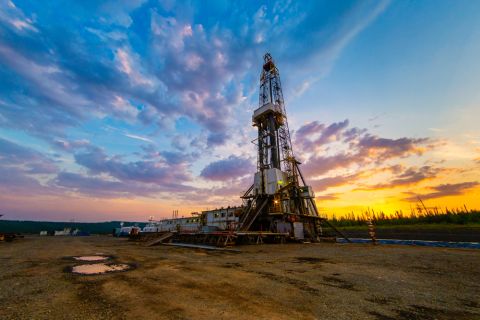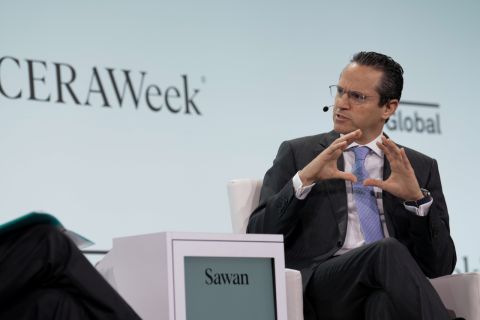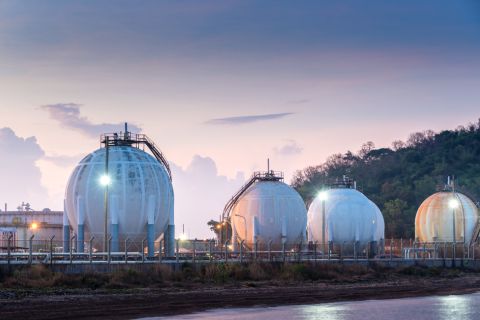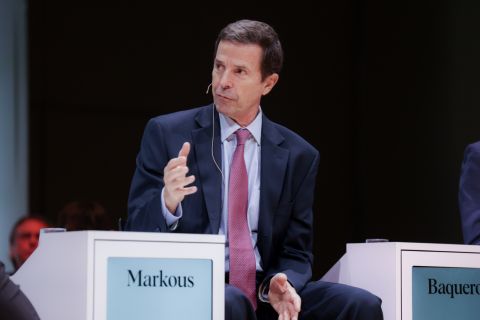
Demand for LNG is currently strong, but low investment in LNG since 2018 means that “LNG supply was not poised to keep pace,” Kristy Kramer, Wood Mackenzie’s vice president, head of gas & LNG markets, research, told attendees of Hart Energy’s America’s Natural Gas Conference in Houston on Sept. 27. (Source: Shutterstock.com)
Learn more about Hart Energy Conferences
Get our latest conference schedules, updates and insights straight to your inbox.
HOUSTON—While there is a lot of demand for LNG, uncertainty clouds the window of opportunity in North America.
The economics for an LNG project that is permitted, built and goes online can be attractive, but a number of hurdles could topple a project, experts said during Hart Energy’s recently held America’s Natural Gas Conference. Even so, a number of LNG projects in North America are nearing final investment decision (FID).
Demand for LNG is currently strong, but low investment in LNG since 2018 meant that “LNG supply was not poised to keep pace” with the demand that surged following the COVID pandemic, said Kristy Kramer, Wood Mackenzie’s vice president, head of gas & LNG markets, research.
“While [LNG] economics are attractive today, there’s a lot of uncertainty going forward.”—Kristy Kramer, Wood Mackenzie
About a dozen LNG projects in North America are at various stages of development, according to Kramer.
“There’s a window of opportunity. More LNG is needed, but it is unlikely that all these projects will get to FID,” she said. “While [LNG] economics are attractive today, there’s a lot of uncertainty going forward.”
And that uncertainty, particularly around permitting, is problematic.
Sempra Infrastructure
James Diemer, director for commercial and strategic analytics at Sempra Infrastructure, asked if companies would be willing to invest hundreds of millions of dollars in a project when there is “significant uncertainty” around the permitting process. “The answer is no,” he said.
Sempra’s Cameron LNG project in Louisiana has been onstream since 2019. Its three trains produce 14 million tonnes per annum (mtpa), and the company expects to reach FID next year on train 4, which would have capacity of 6.35 mtpa and go online in 2027, Diemer said.
“It will be driven by the ability to get through permitting.”—James Diemer, Sempra Infrastructure
The company’s ECA LNG facility in Ensenada, Mexico, is under construction and expected to achieve first LNG in 2024. The first train has a capacity of 3 mtpa, and Sempra has trains 2 and 3, which would have a combined capacity of 12 mtpa, under development.
The two-train Port Arthur LNG project in Texas would have capacity of 12 mtpa and is under development. Sempra has pre-filed with the U.S. Department of Energy for two more trains, which would double that facility’s yearly output.
In Topolobampo, Mexico, Sempra’s Vista Pacifico LNG project is under development, and Sempra has obtained most of the necessary permits, he said. The challenge there, he said, is that the “region is extremely tight on gas supply” with limited pipeline availability.
Vista Pacifico FID expected in 2023 or 2024 and first LNG following in 2027 or 2028, he said.
“We’re the only LNG company with assets on both coasts,” which Diemer said helps manage some of the Panama Canal issues.
“We are doubling the storage and tripling the productivity, and there is room to grow.”—Deborah Gholson, BHE GT&S
He said the project’s timeline is simple, with the expectation that the company will FID the project in the last quarter of 20234 or the first quarter of 2024 with first LNG expected in 2027 or 2028.
“It will be driven by the ability to get through permitting,” James said. “Permitting is really going to drive this project.”
Berkshire Hathaway
Deborah Gholson, gas development service adviser for Berkshire Hathaway Energy Gas Transmission and Storage (BHE GT&S), said the company is in the final stages of construction to expand its JAX LNG facility in Jacksonville, Fla., which has been online since 2018.
“We are doubling the storage and tripling the productivity, and there is room to grow,” she said.
She said small-scale LNG facilities connect stranded assets and support power generation.
“We are basically a Qatari megatrain that can produce 7.2 mtpa capacity.”—Franc James, Penn LNG
The company’s Cove Point facility, in service since 1978, currently has 1.8 bcf/d of send-out capacity. It’s located in a conservation area.
“We were not allowed to use the land we owned,” she said. “We had to go up as opposed to going out.”
The Cove Point site’s 60-foot sound wall surrounds 20,000 tons of structural steel needed for the expansion, and it stretches up six floors in height.
Penn LNG
Franc James, Penn LNG founder, chairman and CEO, said Penn America Energy plans to prefile with the Federal Energy Regulatory Commission (FERC) this year for its newbuild LNG export plant in southeastern Pennsylvania along the Delaware River. The $6.4 billion project design calls for a single train.
“We are basically a Qatari megatrain that can produce 7.2 mtpa capacity,” he said.
Infrastructure is 99% in place for the Penn LNG project.
Recommended Reading
Tinker Associates CEO on Why US Won’t Lead on Oil, Gas
2024-02-13 - The U.S. will not lead crude oil and natural gas production as the shale curve flattens, Tinker Energy Associates CEO Scott Tinker told Hart Energy on the sidelines of NAPE in Houston.
API Gulf Coast Head Touts Global Emissions Benefits of US LNG
2024-04-01 - The U.S. and Louisiana have the ability to change global emissions through the export of LNG, although new applications have been frozen by the Biden administration.
CERAWeek: LNG to Play Critical Role in Shell's Future, CEO Says
2024-03-19 - Sawan said LNG will continue to play a critical role adding that LNG currently makes up around 13% of gas sales but was expected to grow to around 20% in the coming 15 to 20 years.
US Expected to Supply 30% of LNG Demand by 2030
2024-02-23 - Shell expects the U.S. to meet around 30% of total global LNG demand by 2030, although reliance on four key basins could create midstream constraints, the energy giant revealed in its “Shell LNG Outlook 2024.”
CERAWeek: Tecpetrol CEO Touts Argentina Conventional, Unconventional Potential
2024-03-28 - Tecpetrol CEO Ricardo Markous touted Argentina’s conventional and unconventional potential saying the country’s oil production would nearly double by 2030 while LNG exports would likely evolve over three phases.






